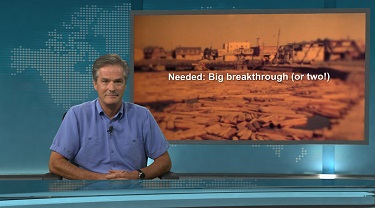Tension is escalating on a global scale. It’s clear that frustrations are spreading further and wider, from the grass roots to the halls of power, and enveloping a broader array of countries and regions. It’s not the kind of pleasant dock-talk that’s more fitting at this point in the summer, but given the related acceleration of negative economic momentum, it’s important that key global developments get good consideration ahead of the fall season. What’s going on, and what, if anything, could turn it around?
A focal point of global tension is the ongoing trade dispute between the United States and China. Putting pen to paper on this issue is complicated by the daily drama that can abruptly shorten the shelf-life of yesterday’s comments. Nevertheless, the recent U.S. declaration of 10% tariffs on the remaining $300 billion of Chinese-sourced imports, effective Sept. 1, and China’s retaliation-ban on all American agricultural products is a notable escalation of this trade war. It hasn’t stopped there. President Donald Trump has since threatened—and this isn’t the first time—to raise the 10% tariff to 25%, has put in doubt recent waivers extended to Huawei, and has classified China as a currency manipulator, against World Trade Organization evidence to the contrary. Incidentally, earlier this week, China aggravated tensions by devaluing the yuan. It’s a high-stakes game of chicken, and neither side is blinking.
By economic weight, any other issues might seem trivial. Not so—Europe is dealing with a slew of its own issues. Brexit and the new hard-line United Kingdom leadership is front and center, throwing short-term economic prospects for an additional loop. But the other anchor tenants of the Zone have troubles of their own. On top of key succession issues in post-Merkel Germany is the economy’s current brush with recession. France is still mired in populist upset, and Italy’s tenuous coalition is fragmenting.
Smaller economies are causing outsized ripples that are affecting the world. Hong Kong’s protests are intensifying, with airport closures now posing a key threat to the regional economy. The impasse is deepening with the growing list of demands, and increased use of force is being met with larger gatherings in economic and politically sensitive venues. At this point, resolution seems a long way off.
The surprise victory by Peronist candidate Fernandez in last weekend’s primaries has thrown Argentina’s bonds and credit default swap spreads into a tizzy, and the currency took a drubbing in the Monday opening of markets. With the Macri reforms now in doubt, Argentina’s economic future is, once more, murky at best.
To this list we can add accelerating protests in Russia, which have moved beyond Moscow to a broader range of cities. Tensions between Japan and South Korea are also escalating. India’s moves to tighten control of Kashmir have implications not just for the territory’s economics, but for the broader policy thrust of the newly-elected Modi government.
Unfortunately, the list goes on—these are just the more recent developments in a world where tensions have been on the rise for some time. In fact, what’s more alarming about the recent increase in negative momentum is the length of time it has been building. By a number of measures, today’s events are the product of a decade-long increase in general political unease (see last week’s Commentary).
And even more unfortunately, it’s not just a psychological phenomenon, with peripheral or less tangible economic effects. The world is teetering closer to recession, with markedly slower growth hitting the U.S., China and the EU, and Germany, the U.K., Mexico, Brazil and other countries either in or very close to a technical recession already. Investment banks, rattled by slowdown, equity market uncertainty, central bank rate cuts and trillions of dollars of bonds now in negative interest rate territory, are laying off workers—some 30,000 since April.
The bottom line?
The unidirectional slide in affairs is troubling. One significant breakthrough—possibly two—could turn things around. The economy is still fundamentally strong, but not enough to counter the wall of uncertainty. We need the breakthrough.
This commentary is presented for informational purposes only. It’s not intended to be a comprehensive or detailed statement on any subject and no representations or warranties, express or implied, are made as to its accuracy, timeliness or completeness. Nothing in this commentary is intended to provide financial, legal, accounting or tax advice nor should it be relied upon. EDC nor the author is liable whatsoever for any loss or damage caused by, or resulting from, any use of or any inaccuracies, errors or omissions in the information provided.





